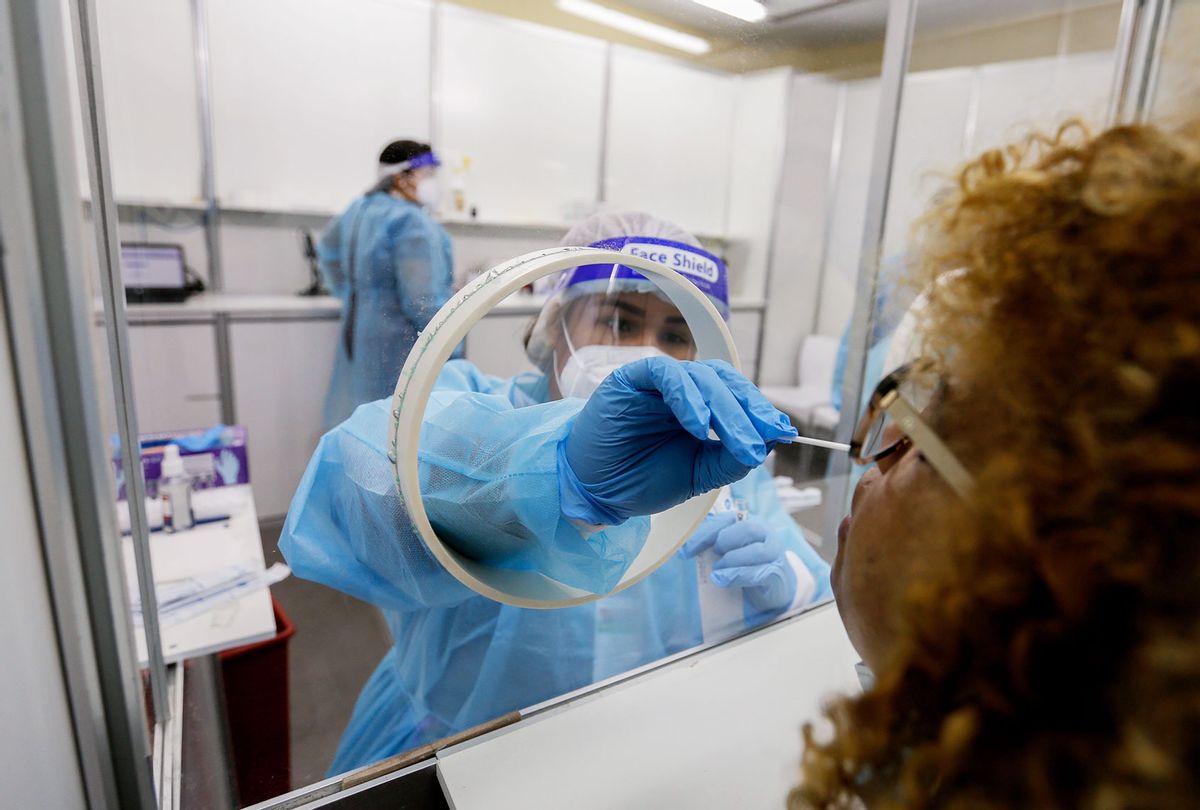It was a milestone that no one wanted: On Wednesday, the total number of new COVID-19 cases reached a height unseen in the entirety of the American version of the pandemic. More than 488,000 people tested positive on that day (according to a New York Times database), nearly twice as many as did so during the pandemic's worst days last winter.
That number looks even worse when additional context is offered: Since testing slowed during the holiday period, it likely has not kept us with the spread of the delta and omicron variants.
Around the country, Americans are bracing themselves for the worst, wondering if they should cancel travel plans or flights to avoid the worst of the outbreak. Yet notably, the omicron variant is not affecting all locales and regions equally.
That region-based uncertainty starts with the question of whether hospitals near you are being heavily strained by new COVID-19 cases. According to a map created by NPR and based on an analysis from the University of Minnesota's COVID-19 Hospitalization Tracking Project, there are many counties in America where the average hospital experiencing an "extreme" level of stress (that is, the ratio of COVID-19 hospitalizations to total beds is more than 20%); the problem is particularly acute in the Northeast, the Midwest and southwestern states like Arizona, New Mexico and Nevada. On the Pacific Coast, the counties reporting data show lower signs of hospital stress, while there are only a sprinkling of counties with similarly troubling data in the heartland and South. That said, there are also many counties where the data simply does not exist.
Looking at the problem of hospital strain on a state-by-state basis, NPR found that six states reported more than half of their hospitals as undergoing "extreme" strain during the week leading up to Christmas Eve: Indiana (65%), Ohio (56%), Michigan (56%), Pennsylvania (53%), New Mexico (51%) and Arizona (51%). By contrast ten states, Puerto Rico and the District of Columbia reported that none of their hospitals were experiencing an "extreme" amount of strain due to COVID-19. (Those ten states included Alabama, Alaska, Florida, Hawaii, Louisiana, Mississippi, Montana, South Carolina, Vermont and Wyoming.)
Want more health and science stories in your inbox? Subscribe to Salon's weekly newsletter The Vulgar Scientist.
While the omicron and delta variants are the two predominant strains in the United States, the exact breakdown as to which one dominates also varies considerably based on region. (Omicron is considered more contagious.) According to a recent map by the Centers for Disease Control and Prevention (CDC), omicron was far more common than delta among recorded new cases in New York and New Jersey on Christmas and the previous week; it was 88.4% for omicron, 11.5% for delta in those two states. By contrast, delta was 55.3% of new cases in New England, compared to only 44.5% of those cases being omicron. In the Mid-Atlantic states 57.7% of the new cases were omicron and 42.1% were delta.
This diversity of results, even within regions, was seen on the other coast as well. For the region consisting of California, Nevada and Arizona, 54.5% of the new cases that week were omicron and 45.2% were delta. Just north in the Pacific Northwest (Washington, Oregon and Idaho), 74.8% of the new cases were omicron and 25.1% were delta. While omicron has largely overtaken delta in much of the south, delta remains prominent in much of the Rocky Mountain and prairie regions of America.
There is some "good" news about the omicron variant, peculiarly. Despite the spike in new cases, The New York Times also reported that "those increased cases have not resulted in more severe disease, as hospitalizations have increased only 11 percent and deaths have decreased slightly in the past two weeks." Omicron, while more transmissible than other strains, has not proved to be as lethal, which has somewhat offset its otherwise potentially devastating effects. The overwhelming body of scientific evidence indicates that people who are fully vaccinated, including with booster shots, are far less likely to develop severe symptoms if they get infected with the omicron variant.
Inside the omicron surge:



Shares